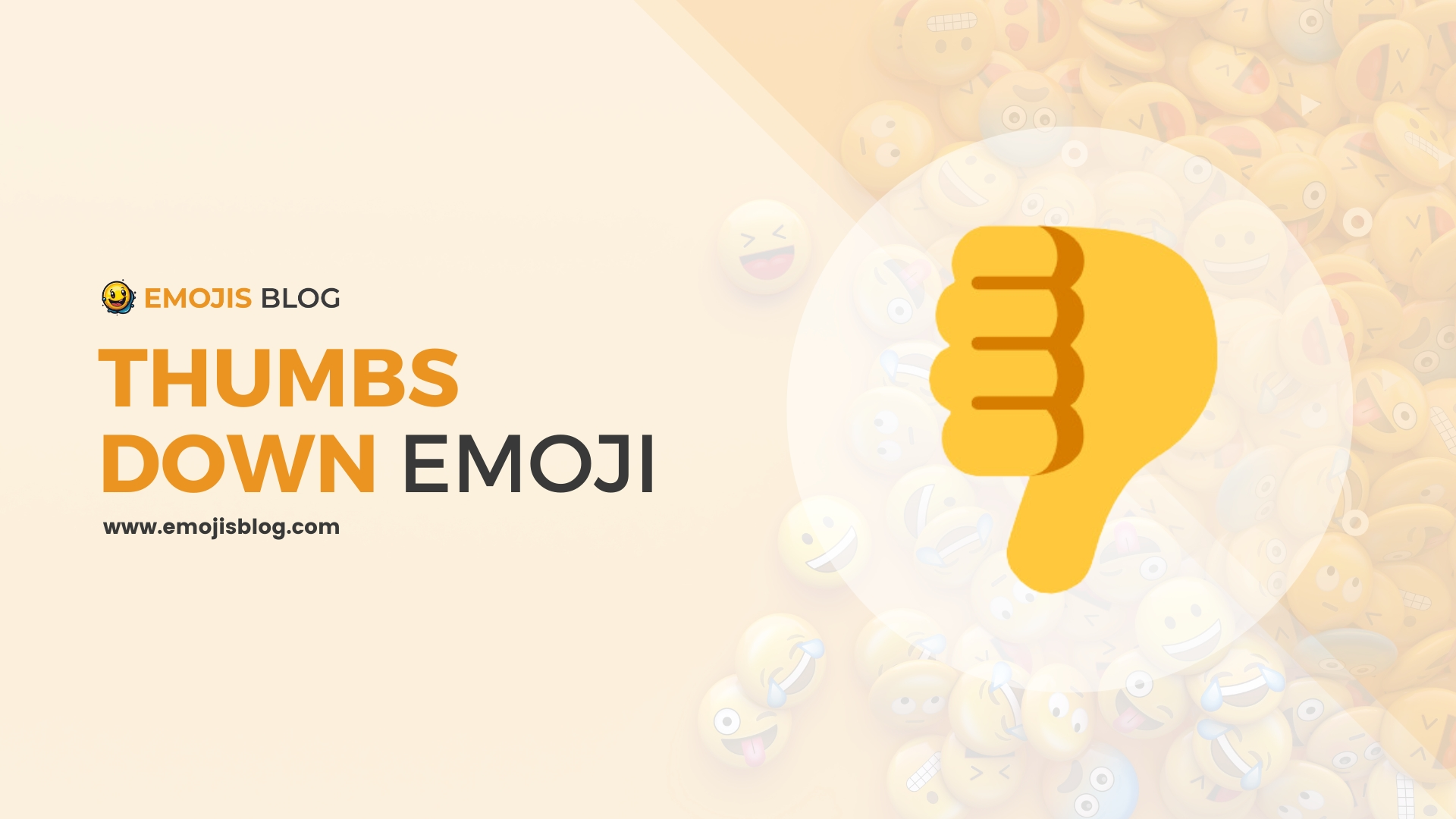What Does The Thumbs Down Emoji Mean 👎
👎
The Meanings Of Thumbs Down Emoji 👎
The emoji you’re inquiring about, the thumbs down emoji 👎, is a digital symbol used to express disapproval, rejection, or dislike in various forms of online communication. Originating from the universally recognized gesture of extending the thumb downward, this emoji conveys negative sentiments ranging from mild disappointment to strong disapproval. It’s employed across different platforms, including social media, messaging apps, and online forums, allowing users to succinctly communicate their feelings towards a message, idea, or content without the need for elaborate text explanations.
Technical Information
| Attribute | Detail |
|---|---|
| Emoji | 👎 |
| Name | Thumbs Down Emoji |
| Unicode Version | Unicode 6.0 (2010) |
| Emoji Version | Emoji 1.0 (2015) |
| Category | People & Body |
| Subcategory | Hand Fingers Closed |
| Codepoints | U+1F44E |
| Shortcode | :thumbsdown:, :-1: (Slack, GitHub, etc.) |
| Keywords | Thumbs down, -1, no, dislike, disapprove |
| Skin Tones | Yes (varies from light to dark) |
| Platforms Supported | iOS, Android, Windows, macOS, Linux, and most web platforms |
Understanding the Thumbs Down Emoji 👎
The thumbs down emoji, represented by a hand gesture with the thumb extended downward, is a universally recognized symbol used across various digital platforms. It serves as a non-verbal communication tool, conveying a range of negative emotions or reactions. This article delves into the origins, meanings, and uses of the thumbs down emoji, providing insight into its significance in today’s digital age.
Origins and Symbolism
The gesture of extending the thumb downward has historical roots dating back to ancient civilizations, such as Rome, where it was used by spectators to express their disapproval of gladiators. However, the interpretation of this gesture in historical contexts is subject to debate among historians. In modern times, the gesture was universally adopted and recognized as a sign of disapproval, rejection, or dissatisfaction.
The digital incarnation of the thumbs down gesture, the 👎 emoji, was introduced with the rise of emojis as a form of digital communication. It quickly became a staple in text messages, social media posts, and other digital platforms, allowing users to express their negative sentiment efficiently and universally.
Meanings and Contexts
The thumbs down emoji can convey a wide array of negative sentiments, including but not limited to:
- Disapproval: Expressing dislike or disapproval of something, such as a comment, suggestion, or event.
- Rejection: Signifying rejection or the act of saying no to a proposal or idea.
- Dislike: Showing a simple dislike for something, similar to how one might use a dislike button on social media.
- Disappointment: Indicating a feeling of disappointment or dissatisfaction with a situation or outcome.
It’s important to note that the interpretation of the thumbs down emoji can vary based on cultural contexts and personal perceptions. What might be seen as a playful gesture of disagreement in one context could be interpreted as a strong expression of disapproval in another.
Usage in Digital Communication
The thumbs down emoji is widely used across various digital platforms, including social media, messaging apps, and online forums. Its usage can range from casual conversations between friends to more formal discussions in professional settings. Here are some common scenarios where the thumbs down emoji might be used:
- Feedback and Reviews: In digital platforms that allow for feedback or reviews, the thumbs down emoji can serve as a quick way to express dissatisfaction.
- Voting and Polling: In polls or questions asking for a yes/no response, the thumbs down emoji can represent a vote against something.
- Reaction to Content: Social media platforms often provide a range of reaction options, including the thumbs down emoji, allowing users to express their feelings about posts or comments.
Navigating Digital Etiquette
While the thumbs down emoji is a useful tool for expressing negative sentiments, it’s important to consider digital etiquette when using it. Its use can sometimes be perceived as harsh or unfriendly, especially in contexts where the tone of communication is ambiguous. As with all digital communication, considering the recipient’s perspective and the context of the conversation is crucial to ensure that the intended message is conveyed respectfully and effectively.
In conclusion, the thumbs down emoji serves as a powerful symbol of disapproval and dissatisfaction in the digital age. Its origins, meanings, and uses reflect its versatility as a communication tool, allowing users to express a range of negative sentiments succinctly. As digital communication continues to evolve, understanding the nuances of such symbols becomes increasingly important in navigating online interactions.

